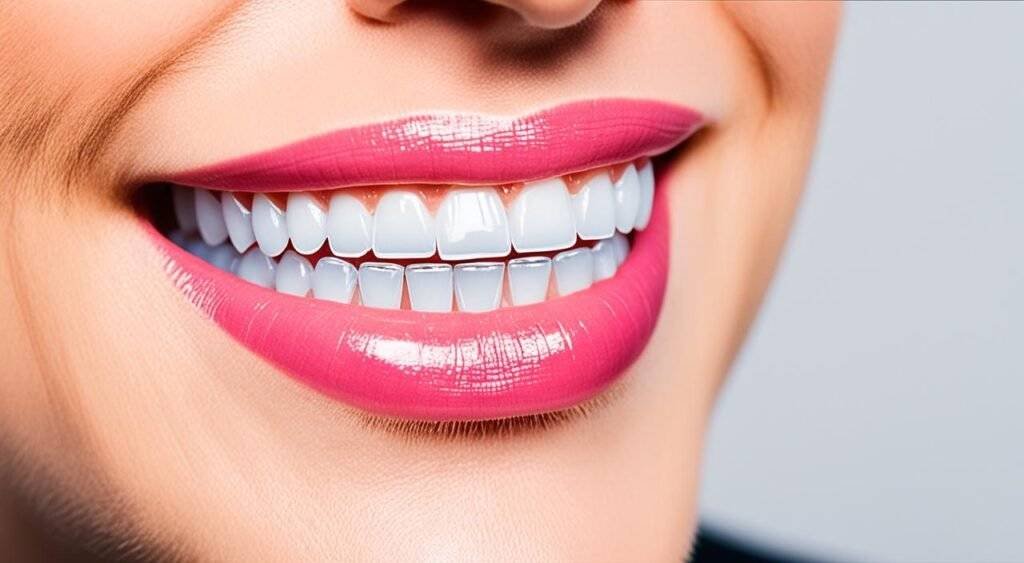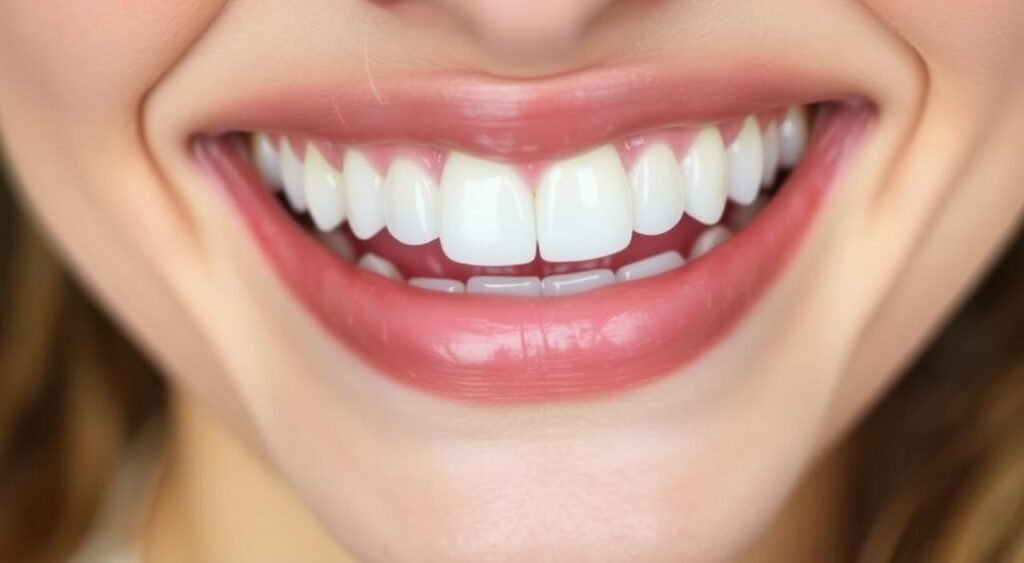Ever wondered if you’re using those trendy teeth whitening strips correctly? The timing of your whitening strips before or after brushing teeth routine can make a big difference in your results. Should you brush before applying those magical strips, or is it better to wait until after? Let’s dive into the nitty-gritty of achieving that dazzling smile you’ve been dreaming of.
Whitening strips have become a go-to solution for many seeking a brighter smile. These thin, flexible plastic strips are coated with a peroxide-based gel. It’s designed to break down stubborn stains on your teeth. But to get the best results, you need to know when to use them in your oral care routine.
Timing is key when using whitening strips. Some say brushing before applying strips leads to better adhesion and stain removal. Yet, others prefer applying strips to unbrushed teeth to avoid sensitivity. So, what’s the best time to use whitening strips in your daily routine?
Finding the right balance in your teeth whitening routine is key. You want clean teeth for the strips to work effectively. But you also need to protect your enamel and gums. Stick around as we explore the pros and cons of each approach. We’ll help you craft the perfect whitening strategy for your pearly whites.
Understanding Teeth Whitening Strips
Teeth whitening strips are a popular choice for a brighter smile. They are thin, flexible strips coated with a whitening gel. This gel has hydrogen peroxide or carbamide peroxide to bleach teeth.
What are whitening strips?
Whitening strips help remove stains from teeth. They come in pairs for the upper and lower teeth. The strips stick to your teeth, letting the gel work its magic.
How do whitening strips work?
The active ingredients in whitening strips break down stains. Most strips need 30 minutes of wear each day. They mainly target stains from coffee, tobacco, and more.
They might not work as well on stains inside the teeth.
Benefits of using whitening strips
Whitening strips have many benefits:
- Convenience: Easy to use at home
- Affordability: Less expensive than professional treatments
- Noticeable results: Can visibly whiten teeth
- Accessibility: Available over-the-counter
But, they might cause tooth sensitivity or gum irritation. Always talk to a dentist before starting any whitening treatment.
The Importance of Proper Teeth Brushing
Brushing your teeth is key to good oral health. It gets rid of food bits, plaque, and bacteria. These can cause tooth decay and gum disease. Brushing and flossing regularly makes your teeth clean for whitening agents.
To get the best from your brushing routine:
- Use a soft-bristled toothbrush and fluoride toothpaste
- Brush for at least two minutes, covering all tooth surfaces
- Wait 20 minutes after eating before brushing to protect your enamel
- Consider using an electric toothbrush for better plaque removal
Did you know 27% of British adults have cavities? This shows how important good oral hygiene is. Brushing twice a day and flossing can lower your cavity risk. It also makes whitening treatments work better.
When using whitening strips, brush your teeth first. This removes plaque, letting the strips get closer to your enamel. For best results, wait 30-60 minutes after brushing. This lets your mouth reset and helps the strips stick better.
Remember, regular brushing keeps your teeth white and healthy. By following these tips, you’re on your way to a brighter smile.
Whitening Strips Before or After Brushing Teeth
Choosing when to use whitening strips can affect how well they work and how comfortable they are. We’ll look at the good and bad of each option. This will help you pick the best way to whiten your teeth.
Brushing Before Applying Strips
Brushing your teeth first can make the strips stick better. This might make the whitening work better. Just use a wet toothbrush without toothpaste to clean your teeth.
But, brushing right before can make your teeth and gums feel sore. The brushing can make your enamel weak. This makes your teeth more sensitive to the whitening chemicals.
Brushing After Using Strips
Brushing after using strips can get rid of any leftover gel. It also keeps your mouth clean. But, brushing too soon can make your teeth hurt if they’re already sensitive.
Wait at least 30 minutes after using strips before brushing. This lets your enamel heal and reduces sensitivity. Remember, you use whitening strips once or twice a day for 30 minutes each time.
Your choice should depend on what feels right for you. No matter what, make sure to apply the strips evenly. Also, avoid letting them touch your gums to prevent irritation.

Best Practices for Using Whitening Strips
Using whitening strips right is important for a great smile. Brush your teeth for two minutes before putting on strips. This helps them stick better. Wait 30 minutes after brushing to let your teeth recover before using the strips.
Here are some whitening strips usage tips:
- Use a soft-bristled toothbrush to prevent enamel damage
- Apply strips according to the product instructions
- Keep strips in place during wear – some brands allow for normal activities
- Rinse thoroughly after removing strips
- Wait 30 minutes before brushing after strip removal
If you worry about tooth sensitivity, try Crest 3D White Whitestrips Sensitive + LED Light. They gently whiten in just 30 minutes a day. Most at-home whitening products are safe for ages 12 and up.
Keep up with good oral health while using whitening strips. This means regular dental visits and avoiding foods and drinks that stain. By following these tips, you’ll get the best results from your whitening strips and avoid side effects.
Potential Risks and Side Effects
Whitening strips can make your smile brighter. But, it’s key to know about possible downsides. Let’s look at some common issues you might face.
Tooth Sensitivity
Many users of whitening strips complain about sensitive teeth. The whitening agents can make teeth react to hot, cold, or acidic foods. This sensitivity usually goes away after stopping the strips.
If you feel discomfort, try using the strips less often or for shorter times.
Gum Irritation
Your gums might feel sore or look red after using whitening strips. This happens when the whitening agents touch your gum tissue. To avoid gum irritation, be careful not to let the strips touch your gums when applying them.
Uneven Whitening
If you don’t apply the strips correctly, you might get patchy results. Make sure to cover all visible tooth surfaces evenly. Remember, whitening strips can’t change the color of dental work like crowns or veneers.
- Wait 30 minutes after removing strips before brushing
- Use a soft-bristled toothbrush to protect sensitive teeth
- Try desensitizing toothpaste to reduce discomfort
- Visit your dentist regularly for check-ups
If you experience severe pain or prolonged irritation, stop using the strips and talk to your dentist. They can help you find a safer way to achieve the bright smile you want.
Maintaining Your Whitening Results
After getting a brighter smile, you’ll want to keep it that way. Your oral health is key to keeping your teeth white. Brush twice a day and floss often to remove plaque and prevent stains.
Be careful with what you eat and drink. Some foods and drinks can stain your teeth. Try to limit:
- Coffee
- Tea
- Red wine
- Dark berries
If you enjoy these drinks, use a straw to reduce tooth contact. Rinse your mouth with water afterward to remove stains.
Using whitening toothpaste can also help. These toothpastes have mild abrasives and whitening agents. But, don’t use them too much, as they can harm your enamel.
Regular dental cleanings are also important. Your dentist can remove tough stains and tartar. They can also suggest touch-up treatments if needed. Whitening results can last from a few months to three years, depending on your habits.
By following these tips and keeping good oral health, you can enjoy your whiter smile for longer.

Alternative Teeth Whitening Methods
Teeth whitening is very popular today. Many methods can help you get a brighter smile. Whitening strips are common, but there are other good options too.
Professional In-Office Treatments
Dentist treatments are the strongest and fastest. They use special whitening agents and light to whiten teeth. You can see big changes in just one visit.
At-Home Whitening Trays
Custom trays are a personal way to whiten teeth. Your dentist makes trays that fit your teeth well. This method can give better results than strips because the gel stays on longer.
Natural Whitening Remedies
Some people like natural ways to whiten teeth. Here are a few:
- Oil pulling with coconut oil
- Brushing with baking soda paste
- Eating crunchy fruits and vegetables
- Using hydrogen peroxide as a mouthwash
These natural methods might help a bit. But they don’t have strong science behind them. They might take longer to work. Always talk to your dentist before trying new whitening methods, if you have sensitive teeth or dental work.
Conclusion
Choosing the right time for whitening strips is key for the best results. Whether to brush before or after depends on your needs. Brushing first helps the whitening agent reach your teeth better.
Waiting 30 minutes after brushing lets fluoride soak into your enamel. This helps avoid gum irritation. Brushing after strips should wait at least 30 minutes to avoid sensitivity.
Use a soft-bristled toothbrush and gentle circular motions. This removes leftover gel without irritation. Remember, regular use is important for results. Most see changes after a few days.
Your oral health is very important. Drinking water can help with sensitivity. Always talk to a dentist before starting whitening, if you have sensitive teeth or dental issues.
By following these tips and keeping up with oral hygiene, you’ll get a brighter, healthier smile.
FAQ
What are whitening strips?
Whitening strips are thin, flexible plastic strips. They have a peroxide-based gel on them. You put them on your teeth to make them whiter.
How do whitening strips work?
Whitening strips use hydrogen peroxide. This breaks down stains on your teeth, making your smile brighter and whiter.
What are the benefits of using whitening strips?
Whitening strips are easy to use at home. They are affordable and work well. They can make your teeth whiter without needing a dentist.
Should I brush my teeth before or after using whitening strips?
Brushing before or after strips depends on your preference. Brushing first makes the surface clean, but it might increase sensitivity. Brushing after can remove extra gel, but wait at least 30 minutes to avoid sensitivity.
What are the possible risks and side effects of using whitening strips?
Risks include tooth sensitivity and gum irritation. They can also weaken your enamel, making your teeth more prone to stains. Always follow the instructions and watch for any discomfort.
How can I maintain my whitening results after using strips?
To keep your teeth white, avoid staining foods. Brush and floss regularly. Use touch-up treatments as needed and visit your dentist for cleanings.
Are there any alternative teeth whitening methods?
Yes, there are many options. You can try professional treatments, at-home trays, or natural methods like oil pulling. Always consult a dentist, especially if you have sensitive teeth.









3 Comments
Pingback: Is Teeth Whitening Covered by Insurance? Discover the Facts!
Pingback: Do Teeth Whitening Strips Expire? What You Should Know
Pingback: Foods to Eat After Teeth Whitening: Best Choices